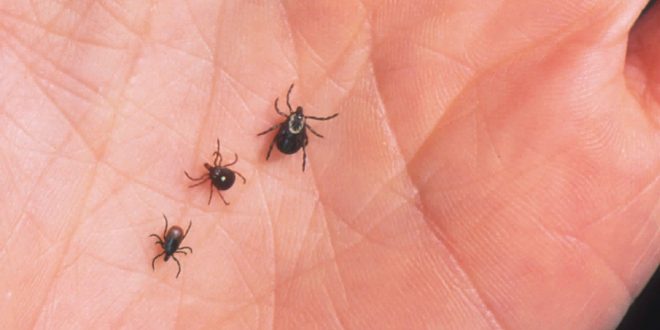Summer is the time for gardening, hiking, relaxing at the lake and traveling to wooded and coastal vacation sites. It’s also the time for ticks, putting people and pets at risk of exposure to infections such as Lyme disease, a condition which often is misunderstood.
Lyme disease is an infection caused by being bitten by an infected tick. The first and typical symptom is usually a rash that spreads out from the site of the tick bite. Left untreated, the germs (bacteria) can spread to other areas of the body. In some cases this can cause serious symptoms – often months after the initial tick bite. A course of antibiotic medication will usually clear the infection.
What is Lyme disease?
Lyme disease is an illness caused by being bitten by a tick that is infected with a germ (bacterium) called borrelia. There are various types of this bacterium but Borrelia burgdorferi causes Lyme disease. It is called Lyme disease after the name of the town in the USA where it was first described.
How do humans get Lyme disease?
The germ (bacterium) that causes Lyme disease lives in certain animals. These are mainly rodents such as mice, some birds and some other small animals. The bacterium is usually harmless to the animals.
Ticks are small insect-like creatures, about the size of a pinhead. Ticks feed by biting the skin and sucking blood from animals such as mice, and sometimes humans. In this way, some ticks get infected with the bacterium that causes Lyme disease.
Ticks cannot jump or fly, but climb on to passing humans from long grass or foliage. If an infected tick bites a human, then the bacteria may be passed into the human. The bacterium that causes Lyme disease is not passed from person to person.
After a human has been bitten by a tick, it usually takes 24-48 hours for the bacteria in the tick to pass into the human. (Ticks are tiny and ‘cling on’ to you once they bite you. They then suck blood and become swollen (‘engorge’) with blood which they feed off. The bacteria are normally carried in their gut, and only travel up to their mouth and into your skin once they have been fed and are engorged. This normally takes about 24 hours, but can be less if the tick was already partially fed.) Therefore, if you remove a tick soon after being bitten – within 24 hours – you are much less likely to develop Lyme disease, even if it was an infected tick.
So, it is only certain ticks, that are infected, that bite, and are not noticed clinging on to the skin, that cause Lyme disease. However, ticks are very small, and often do not hurt when they bite so it is quite easy to have a tick bite without noticing. Many people who develop Lyme disease cannot remember being bitten by a tick.
Once bacteria are passed from the infected tick into your skin, they then multiply and travel in the bloodstream to other parts of the body to cause symptoms. The parts of the body that are mainly affected by this bacteria are the skin, joints, nerves and heart.
Agencies/Canadajournal

 Canada Journal – News of the World Articles and videos to bring you the biggest Canadian news stories from across the country every day
Canada Journal – News of the World Articles and videos to bring you the biggest Canadian news stories from across the country every day

